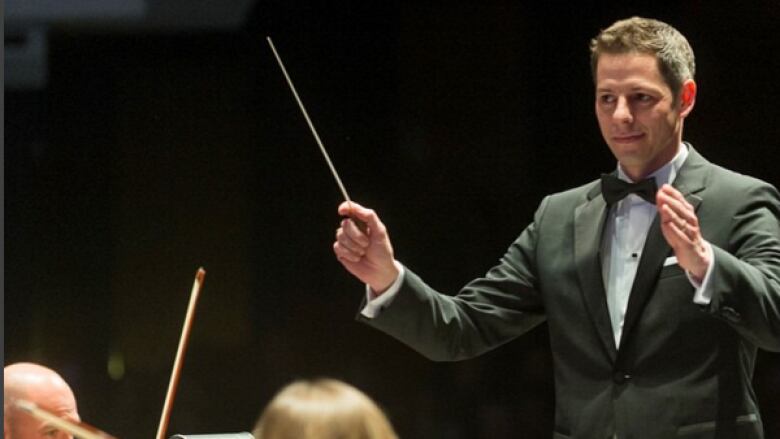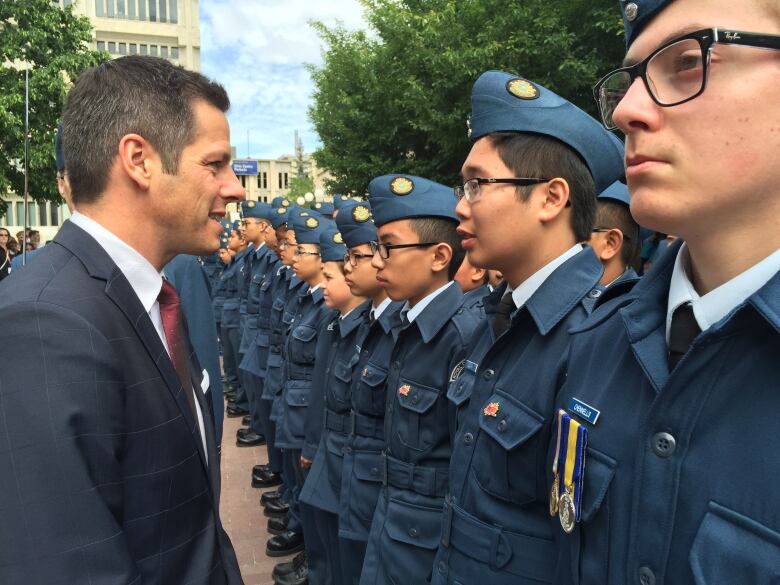Maclean's racism label to budget woes: Can Bowman stay popular?
Two years down, two years to go: Mayor at the crossroads of his first term

As Brian Bowman nears the midpoint of his first term as mayor, he describes Winnipeg as a more confident city bolstered by infrastructureinvestmentsand less opaque governance.
"I've been very pleased we've been able to move in the right direction when it comes to greater openness and transparencyat city hall," Bowman said this week, asthe two-year anniversary of his election-night victory approached.
On Oct. 22, 2014, the lawyer with littlepolitical experience trounced former NDP MP and MLA Judy Wasylycia-Leis and five other mayoral candidates in a race where voters clearly preferred a new face to lead a city that was reeling from a series of capital construction and procurement scandals.
Rarely a day has gone by without Bowman uttering the phrase "openness and transparency" as if it were a mantra capable of insulating Winnipeg and his administration, by extension from the deleterious effects of the latter years of former mayor Sam Katz's final term in office.
Two years later, the RCMP are still investigating the construction of Winnipeg's new police headquarters and no city official, either departed or still employed, has been publicly censured for their roles in the construction of the police HQ, the procurement of four new fire-paramedic stations or theseries of questionable real-estate transactions identified by a 2014 external audit.
Bowman has all but moved on.He citesinvestments in Winnipeg roads, rapid transit and active-transportation as the most significant accomplishments undertaken atcity hall since he and seven other rookies took their seats on city council.

"I also think the pride and confidence that Winnipeggers have in themselves and in the community has been enhanced and I'm working as hard as I can to really build on that pride. We're going to see it on full display this weekend at the [NHL] Heritage Classic," Bowman said outside his office at city hall,temporarily vacant due to renovations.
At the midpoint of this council term, it's worth taking a look at the best and worst of the Bowman administrationduring the two years in the rear-view mirror as well as a peek at what lies ahead in the two years to go before the 2018 election.
1. Best move:Taking ownership of racism
Mere months after Bowman took office, Winnipeg took a reputational hit when Maclean's magazine declared the Manitoba capital Canada's most racist city.

Instead, Bowman chose to accept the obvious: the city with Canada's largest indigenous population suffers from both overtand institutional racism.
"There were things in the article and characterizations of Winnipeg that we could have challenged, butin my view, that wouldn'thave allowed us to have the opportunity that we've had this year to really focus on trying to do a better job to combat racism," Bowman told reportersfollowing an Oct. 6 speech.
Bowman went on to declare 2016 the year of reconciliation in Winnipeg. This is not just asymbolic gesture, as political leaders are capable of setting the tone for publicdiscourse amongall citizens of a givencity, province, state or even country.
To see the oppositeeffect inaction, consider the rise of racist rhetoric in the U.S. on the heels of anti-Muslim andanti-immigrant statements byRepublican presidential candidate Donald Trump.
2. Worst blunder: Slamdancingwith the one who brought you
Winnipeg Jets co-owner Mark Chipman isa quiet and understated businesspersonwho appears toappreciatethe spotlight about as much as newborn kittens enjoybeing doused with pitchersfull of frigid water.
That's why it was a big deal to see the True North Sports & Entertainment chairmanendorse Bowman during the 2014 mayoral race and aneven bigger deal when the two men feuded publicly over the development of True North Square.
- Jets owner Mark Chipman endorses Brian Bowman's mayoral bid
- True North's Mark Chipman fires back at mayor, puts Carlton Street project on hold
In January2015, Bowman questioned the manner in which True North came to acquire an option to develop the former Carlton Inn site, which downtown development agency CentreVenturehad acquired in order to make room for a hotel to serve an expanded RBC Convention Centre.

After a cooling-off period, the two men reconciled. Political popularity, it seemed, did not renderthe mayor invincible.
The first phase of the projectis now under constructionand plans are coming into place for the second phase.
"The manner in which we got to the end result could have been done better, for sure," Bowman said this week.
3. What lies ahead
Well into his second year as mayor, Bowman continued to bevery popular amongWinnipeg voters, as a July 2016 Probe Research poll pegged his approval rating at 69 per cent.
How popular he remains may depend on what transpires over the next few weeks and months. First, council's pending approval of a Bowman-shepherdedgrowth-fee proposal has angered an influential segment of his supporters: the property developers and construction-company owners who backed the Progressive Conservative mayoral candidateover the NDP-affiliatedWasylycia-Leis in 2014.
The arrival of the 2017 budget on Nov. 22 will reveal whether Bowman is capable of keeping his promise to limit property-tax hikes in Winnipeg to the rate of inflation. If he usesgrowth-fee revenue to keep property taxes down heruns the risk of angering an even broader constituency.

"That's a goal that I have, but it's not a hard and fast timeline. We'll have to see if it can be done," Bowman said this week.
The mayor said he has not yet seen the Portage & Maintraffic study that was completed and handed over to senior city administrators in September. If he has not been briefed aboutthe report at all, it would be difficult to incorporate money to reopenPortage & Main into the budget with only one month to go before its publication.
4. And who else is along for the ride?
On Nov. 2, city council holds its annual organizational meeting, a largely ceremonial event where councillors are assigned committee duties for the following year.
The midterm organizational-committee meeting is traditionally the point where Winnipeg mayors shake up the membership of executive policy committee, which functions as the mayor's cabinet and inner circle.
South Winnipeg-St. Norbert Coun. Janice Lukes is a candidate for removal, given her strongopposition to Bowman's growth-fee plan. She said this week she does not care whether or not she remains on EPC.
Transcona Coun. Russ Wyatt, meanwhile, is still pushing for the mayor to follow through on an election-campaign pledge to elect the members of EPC, at least in an informal setting.
Wyatt, who is often Bowman's loudest critic at city hall, said the mayor wields too much power right now.
"You only have the mayor, his seniorstaff and administrators runningthe city. Everyone else is along for the ride," said Wyatt, who has authored a motion calling for a review of the way the city government is structured."You have a system that divides and conquers council. The mayor never loses a vote."












_(720p).jpg)


 OFFICIAL HD MUSIC VIDEO.jpg)
.jpg)



























































































